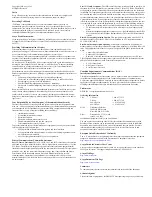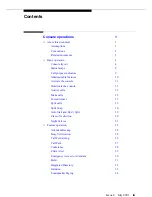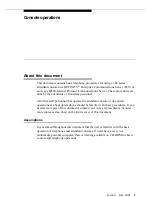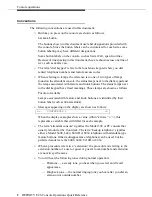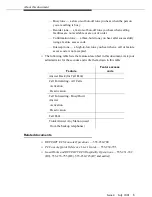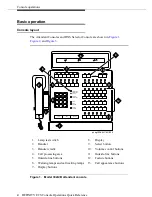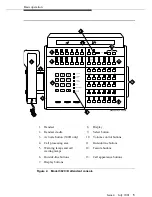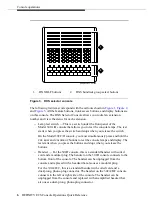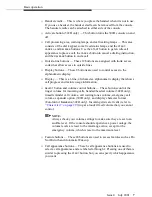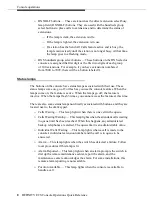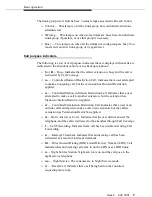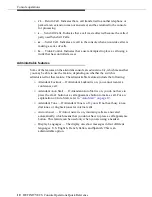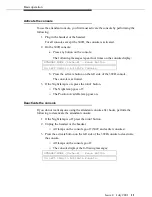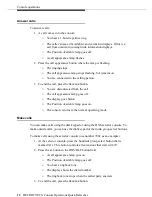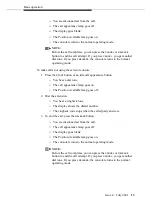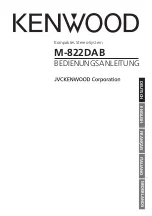
Copyright 2001, Avaya Inc
All Rights Reserved
Notice
Every effort was made to ensure that the information in this book was complete and
accurate at the time of printing. However, information is subject to change.
Preventing Toll Fraud
“Toll fraud” is the unauthorized use of your telecommunications system by an
unauthorized party (for example, a person who is not a corporate employee, agent,
subcontractor, or working on your company's behalf). Be aware that there may be a risk of
toll fraud associated with your system and that, if toll fraud occurs, it can result in
substantial additional charges for your telecommunications services.
Avaya Fraud Intervention:
If you suspect that you are being victimized by toll fraud and you need technical assistance
or support, call the Technical Service Center's Toll Fraud Intervention Hotline at 1-800-
643-2353.
Providing Telecommunications Security
Telecommunications security (of voice, data, and/or video communications) is the
prevention of any type of intrusion to (that is, either unauthorized or malicious access to or
use of your company's telecommunications equipment) by some party.
Your company's “telecommunications equipment” includes both this Avaya product and
any other voice/data/video equipment that could be accessed via this Avaya product (that
is, “networked equipment”).
An “outside party” is anyone who is not a corporate employee, agent, subcontractor, or
working on your company's behalf. Whereas, a “malicious party” is anyone (including
someone who may be otherwise authorized) who accesses your telecommunications
equipment with either malicious or mischievous intent.
Such intrusions may be either to/through synchronous (time-multiplexed and/or circuit-
based) or asynchronous (character-, message-, or packet-based) equipment or interfaces for
reasons of:
•
Utilization (of capabilities special to the accessed equipment)
•
Theft (such as, of intellectual property, financial assets, or toll-facility access)
•
Eavesdropping (privacy invasions to humans)
•
Mischief (troubling, but apparently innocuous, tampering)
•
Harm (such as harmful tampering, data loss or alteration, regardless of motive or
intent)
Be aware that there may be a risk of unauthorized intrusions associated with your system
and/or its networked equipment. Also realize that, if such an intrusion should occur, it
could result in a variety of losses to your company (including but not limited to, human/
data privacy, intellectual property, material assets, financial resources, labor costs, and/or
legal costs).
Your Responsibility for Your Company’s Telecommunications Security
The final responsibility for securing both this system and its networked equipment rests
with you - an Avaya customer's system administrator, your telecommunications peers, and
your managers. Base the fulfillment of your responsibility on acquired knowledge and
resources from a variety of sources including but not limited to:
•
Installation documents
•
System administration documents
•
Security documents
•
Hardware-/software-based security tools
•
Shared information between you and your peers
•
Telecommunications security experts
To prevent intrusions to your telecommunications equipment, you and your peers should
carefully program and configure your:
•
Avaya-provided telecommunications systems and their interfaces
•
Avaya-provided software applications, as well as their underlying hardware/soft-
ware platforms and interfaces
•
Any other equipment networked to your Avaya products.
Federal Communications Commission Statement
Part 15: Class A Statement. The 302A, 302B, 302C, and 302D consoles have been tested
and found to comply with the limits for a Class A digital device, pursuant to Part 15 of the
FCC Rules. These limits are designed to provide reasonable protection against harmful
interference when the equipment is operated in a commercial environment. This equipment
generates, uses, and can radiate radio frequency energy and, if not installed and used in
accordance with the instruction manual, may cause harmful interference to radio
communications. Operation of this equipment in a residential area is likely to cause
harmful interference, in which case the user will be required to correct the interference at
his own expense.
Part 15: Class B Statement. The 302D console has been tested and found to comply with
the limits for a Class B digital device, pursuant to Part 15 of the FCC Rules. These limits
are designed to provide reasonable protection against harmful interference in a residential
installation. This equipment generates, uses, and can radiate radio-frequency energy and, if
not installed and used in accordance with the instructions, may cause harmful interference
to radio communications. However, there is no guarantee that interference will not occur in
a particular installation. If this equipment does cause harmful interference to radio or
television reception, which can be determined by turning the equipment off and on, the user
is encouraged to try to correct the interference by one or more of the following measures:
•
Reorient the receiving television or radio antenna where this may be done safely.
•
To the extent possible, relocate the receiver with respect to the telephone equip-
ment.
•
Where the telephone equipment requires ac power, plug the telephone into a differ-
ent ac outlet so that the telephone equipment and receiver are on different branch
circuits.
Part 68: Network Registration Number. This equipment is registered with the FCC in
accordance with Part 68 of the FCC Rules. It is identified by FCC registration number
AV1USA-43023-MF-E.
Part 68: Answer-Supervision Signaling. Allowing this equipment to be operated in a
manner that does not provide proper answer-supervision signaling is in violation of Part 68
rules. This equipment returns answer-supervision signals to the public switched network
when:
•
Answered by the called station
•
Answered by the attendant
•
Routed to a recorded announcement that can be administered by the CPE user
This equipment returns answer-supervision signals on all DID calls forwarded back to the
public switched telephone network. Permissible exceptions are:
•
A call is unanswered
•
A busy tone is received
•
A reorder tone is received
Canadian Department of Communications (DOC)
Interference Information
This digital apparatus does not exceed the Class A limits for radio noise emissions set out
in the radio interference regulations of the Canadian Department of Communications.
Le Présent Appareil Nomérique n’émet pas de bruits radioélectriques dépassant les limites
applicables aux appareils numériques de la class A préscrites dans le reglement sur le
brouillage radioélectrique édicté par le ministére des Communications du Canada.
Trademarks
DEFINITY is a registered trademark of Avaya.
Ordering Information
Call:
US Voice:
1 800 457 1235
US Fax:
1 800 457 1764
non-US Voice:
+1 410 568 3680
non-US Fax:
+1 410 891 0207
Write:
Globalware Solutions
200 Ward Hill Avenue
Haverhill, MA 01835 USA
Order:
Document No. 555-230-890
Issue 4, July 2001
For additional documents, refer to the “Introduction.”
You can be placed on a standing order list for this and other documents you may need.
Standing order will enable you to automatically receive updated versions of individual
documents or document sets, billed to account information that you provide. For more
information on standing orders, or to be put on a list to receive future issues of this
document, contact the Avaya Publications Center.
European Union Declaration of Conformity
The “CE” mark affixed to the equipment described in this book means that the equipment
complies with directives shown in the Declaration of Compliance located at:
http://support.avaya.com/elmodocs2/DoC/
Avaya National Customer Care Center
Avaya provides a telephone number for you to use to report problems or to ask questions
about your call center. The support telephone number is 1-800-242-2121.
Avaya Web Page
http://www.avaya.com
Avaya Document Web Page
http://www.avayadocs.com
Comments
To comment on this document, return the comment card at the end of the document.
Acknowledgment
This document was prepared by the DEFINITY development group of Avaya University.


